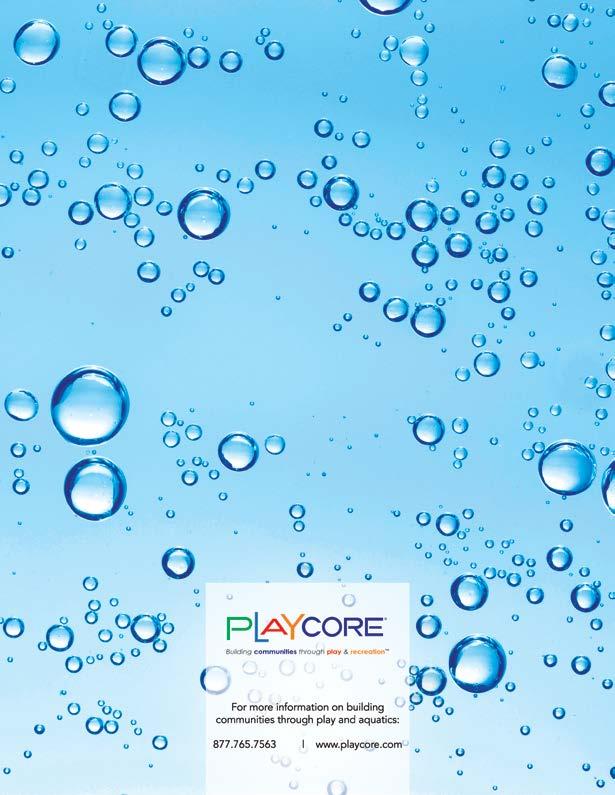
Research-Based Health Benefits of Aquatic Immersion and Activity

Developed in partnership by

©2015 PlayCore Wisconsin, Inc. All rights reserved.
The purpose of this resource is to raise awareness and provide education about the value and benefits of aquatic immersion and activity; it is not to be considered as an all-inclusive resource. While our intent is to provide general information about building communities through play and recreation, PlayCore, its family of brands, the National Swimming Pool Foundation, and the contributing authors disclaim any liability based upon information contained in this publication and provide these comments as public service in the interest of supporting the benefits of water while advising of the restricted context in which it is given.

02
04
06
08
10
12
14
16
18
20
22
Thomas M. Lachocki, Ph.D., CEO, National Swimming Pool Foundation
Bruce Becker, M.D., Director, National Aquatics & Sports Medicine Institute
Bruce Becker, M.D., Director, National Aquatics & Sports Medicine Institute
Bruce Becker, M.D., Director, National Aquatics & Sports Medicine Institute
Steven Blair, P.E.D, Professor, Arnold School of Public Health, University of South Carolina
Eadric Bressel, Ph.D., Professor of Biomechanics, Utah State University
Eadric Bressel, Ph.D., Professor of Biomechanics, Utah State University
Paul Chantler, Ph.D., Assistant Professor, Division of Exercise Physiology, School of Medicine, West Virginia University
Dennis Dolny, Ph.D., Department Head, Health, Physical Education, and Recreation Department, Utah State University
Dennis Dolny, Ph.D., Department Head, Health, Physical Education, and Recreation Department, Utah State University
Elizabeth “Betsy” Nagle, Ph.D., FACSM, Assistant Professor and Graduate Faculty, Department of Health and Physical Activity, University of Pittsburgh
24
26
28
30
32
34
Jacquelyn Ann Nagle, Ph.D., Assistant Professor, Department of Counseling and Exercise Science, John Carroll University
Hirofumi Tanaka, Ph.D., Professor, Department of Kinesiology and Health Education, University of Texas at Austin
Hirofumi Tanaka, Ph.D., Professor, Department of Kinesiology and Health Education, University of Texas at Austin
Making Water Immersion a
features
Foreword
Promoting Nervous System Health
Enhancing Brain Blood Flow and Arterial Health
Biological Benefits for Post-Traumatic Stress
Energy Expenditure
Lowering
Increasing
and
All-cause Mortality Risk
Low
Strengthening
Back Muscles and Reducing Pain
Promoting Balance and Fall Prevention
Improving Cardiovascular Health
Burning Calories through Water Exercise
Promoting Bone Health through Water-based Exercise
Provoking Cardiometabolic Response Benefits through High Intensity Interval Training
Increasing Physical Activity through Non-weight Bearing Modality
Preventing and Lowering High Blood Pressure
Reducing Arthritis Joint Stress
Call to Action
Priority
Scholar Contributors
References www.playcore.com/WaterImmersionWorks
foreword
Thomas M.
Lachocki, Ph.D.
CEO, National Swimming Pool Foundation
We live in a time where government, employers, insurers, and health advocates are aligning to encourage activity to prevent those we love from suffering decades of chronic illness and premature death. We live in a time where inactivity has become the norm and our collective health suffers. Although activity will be advocated and promoted, the options available to those most in need are limited. Fortunately, the environment where ancient civilizations formed –beside the water – is the environment where modern civilization can reform our health. Water immersion remains a unique opportunity for those who have been inactive and for all of us as we get older.
Though our common sense acknowledges that water immersion and activity works to improve our health, much of the science that supports this belief lies deep – and often unnoticed – in scientific journals. The leading scholars who are featured in Water Immersion Works™ are deeply immersed in the aquatics field and are a wellspring of wisdom. From the scientific depths, they bring a fountain of knowledge to the surface for us all to share. As water is a unique location that fosters health, Water Immersion Works™ is a unique publication that furthers our knowledge and opens the gates to healthier lives.
As you engage with each of the research vignettes, my wish is that each one brings you a step closer to having water play a greater role in improving your life. To those who are water active, I hope this resource helps explain why you feel so good. To those who are water competent, I hope it encourages you to schedule your next water experience. To those who are not yet water competent, make this the year you, your children, and your grandchildren learn to swim and to experience the many ways that water works for your family.
We believe deeply in the many powers of water and we hope this resource will inspire and empower communities to advocate for aquatics and celebrate the many health and societal benefits that it offers. It was no accident that civilization first thrived beside the water. It will be no accident that health will be revived within the water.

2 www.playcore.com/WaterImmersionWorks

3
Promoting Nervous System Health
Bruce Director,
National Aquatics & Sports Medicine Institute Becker, M.D.
The human body is a wonder, with multiple systems working together to create awareness of the physical environments into which the body might be placed, respond to that information, and operate under a variety of physical demands. At the same time, the body is constantly working to maintain or restore health. The central computer that makes this possible is the brain, connecting the sensory organs with the body. It processes the sensory information and sends signals through the brain stem to the spinal cord and then to the peripheral nerves, all of which act as the circuitry to keep these multiple systems operating together in an efficient, subconscious, and nearly instantaneous manner.
These complex processes function at their maximum in our early adulthood years but are designed to last through a lifetime, albeit with some biologically-driven reduction in performance as we age. That said, the systems are designed for repair and self-maintenance throughout the lifespan. The major driving force in maintenance is demand placed upon the body, i.e. exercise. Without exercise, a variety of physiologic processes facilitate progressive deterioration across the age span, gently escorting us off the stage of life.
While exercise is a critical factor in system maintenance, there are some very unique factors associated with aquatic exercise. Research has shown that aquatic exercise works to improve the function of the heart.10,11 Immersion facilitates an increase in the cardiac output of blood throughout the body, increasing the supply of oxygen to muscles and the central nervous system. This happens through relaxation of the blood vessels so that they can carry
more blood while presenting less resistance to the heart pumping that blood. With regular aquatic exercise, the vessels themselves remain pliant and supple.12-14 Exercise itself releases a host of factors that promote repair and regeneration of brain cells, nerve cells, muscle cells, and bone.15 Whether these factors in the blood are released more efficiently during aquatic exercise has only been studied in rats so far, but in those animals there is an increase unique to aquatic exercise.16,17 New research in humans has shown that blood flow to the brain is increased during aquatic immersion and also during aquatic exercise, potentially delivering more oxygen and nutrients to the brain cells.2,3 This could help slow the deterioration of age-related brain performance.
At the same time, research has shown that immersion, especially warm water immersion, has a unique effect upon the autonomic nervous system, the part of the central nervous system that controls essential respiratory, cardiac, and vascular systems.18 A relaxation effect is produced, bringing the autonomic system into optimal balance. This autonomic balance has been associated with a reduction in blood pressure, improvement in endocrine function, and even improved mood and cognitive function.
Obviously, the human body is designed to work on land. But by using the aquatic environment to augment the normal biologic processes of repair and regeneration, we can produce a significant boost to nearly all of these normal repair processes. Such a simple solution for so many issues seems contradictory, but water truly is a miraculous answer.
4 www.playcore.com/WaterImmersionWorks

5
Enhancing Brain Blood Flow and Arterial Health
Bruce
Director, National Aquatics & Sports Medicine Institute Becker, M.D.
I had neck surgery, was overweight with high blood pressure/cholesterol. The rehab which included the heated salt water pool allowed me to regain my energy and begin an exercise regimen.” — Agnes Dobitz
Source: Roseville Health & Wellness Center. Success stories. 2015; http://www.rosevillehwc.com/successStories.php, July 23, 2015.
For many of us, there is a level of fear of losing our cognitive abilities as we age. No one wants to be dependent upon others in the way that dementia causes. If there were simple and safe ways of preventing this, certainly any reasonable person would adopt such practices. It has long been known that a healthy diet, maintaining a healthy blood pressure, avoidance of excessive amounts of alcohol, and getting regular exercise can all be beneficial in reducing the chance of developing dementia. But some recent research raises the possibility of an even more powerful means of reducing the chances of developing dementia even treating existing dementia.
In the past several years, it has been found that blood flow to the brain may be enhanced by simple aquatic immersion, and during aquatic exercise.1-3 Researchers placed healthy subjects into a tank, measuring blood flow through the major arteries supplying the brain as the subjects were progressively immersed, going from zero depth to waist depth and then shoulder depth. Both cardiac output and blood flow to the brain increased substantially, and a subsequent study showed that this increase persisted throughout an exercise period, when compared to dry land exercise
of the same intensity. Other studies have shown that aquatic exercise acts to prevent the age-related stiffening of large vessels, permitting improved blood flow.4,5
While no formal studies have been published to date assessing the impact of aquatic immersion and exercise in dementia, there is an emerging and fascinating series of aquatic intervention case reports regarding people with Alzheimer’s disease.6-9 These individuals have shown improved speech and language function, improved balance and agility, and improved cognitive and memory function not only during the period of immersion but even persisting afterwards. As additional research supports these case reports, aquatic immersion and exercise may more formally emerge as a marvelous and scientific approach to helping people with dementia.
Meanwhile, it is reasonable to take advantage of the wonderful ways in which aquatic immersion and exercise has been shown to improve brain blood flow and arterial health. Perhaps you might be preserving your brain function for many years into the future.
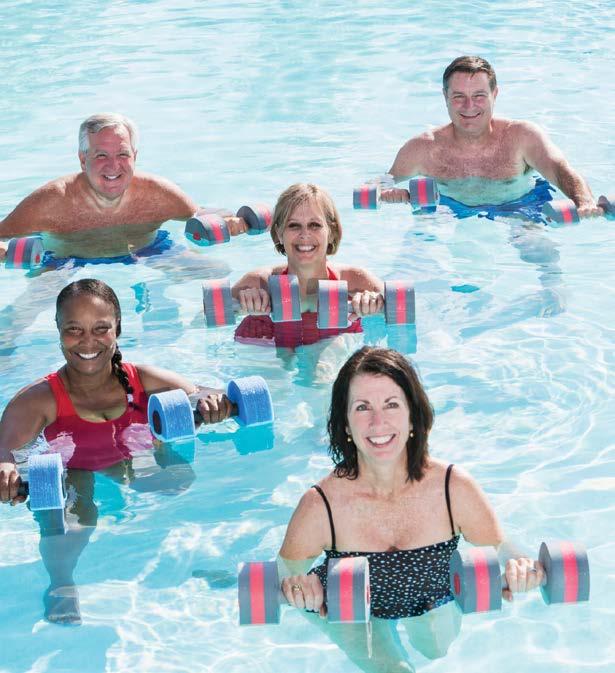
6 www.playcore.com/WaterImmersionWorks

7
Biological Benefits for Post-Traumatic Stress
Bruce
Director, National Aquatics & Sports Medicine Institute Becker,
M.D.
There has been a lot of publicity about Post-Traumatic Stress (PTS) in recent years, as service members have returned from war with this and also with traumatic brain injury (TBI). But this is not a new medical problem and it happens quite commonly in civilian life as well. The underlying cause of this syndrome is found within the central nervous system, in a component called the autonomic nervous system (ANS). This system is meant to subconsciously regulate the basic functions of survival, such as heart rate, respiratory rate, gut function, and some mental functions as well. There are two sub-components of the ANS . The sympathetic system prepares the body to escape or fight danger by raising the heart rate and blood pressure, sending more blood to the muscles, opening the airways, and shutting down noncritical functions such as the gastrointestinal system. It responds within milliseconds, but calms down slowly afterwards. The parasympathetic system in contrast governs digestion, respiratory rate, heart rate, and stability but operates in a much slower timeframe. Under ideal relaxed circumstances, both systems are in balance. With PTS, the body has trained itself to keep the sympathetic system on a hair trigger, going off with the slightest inkling of perceived danger. So, such individuals are in an ongoing constant state of crisis. Unless the system can be retrained, PTS can last for decades, causing great distress and adverse health consequences.
Warm water immersion has a potent biologic impact on the sympathetic nervous system, causing a brisk
down-regulation of sympathetic activity, allowing the parasympathetic system to come into balance. This is almost certainly the central nervous system response that creates that marvelous feeling of “Ahhhh,” when submerging into warm water. The body undergoes many neurologic changes, heart rate drops as does blood pressure, muscle tension diminishes, and even the brain begins to work in different ways.
Working with returnee military warriors with PTS in a warm water therapy environment has shown excellent promise. The military warrior, according to the VAS scale, has shown reduced pain by an average of two to three points per session and self-reported decreased anxiety levels at the conclusion of sessions. Blood pressures exhibited significant reductions in both systolic and diastolic blood pressures. Heart rates often showed a reduction of 20 points compared with beginning of session and end of session. In addition, the overall intensity of headaches, a common symptom, was also decreased. These results lead to the recommendation of warm water body exercise, such as Ai Chi as a nonpharmacological intervention for PTS and TBI.
Warm water therapy environments are beneficial for people with PTS, chronic anxiety disorders, depression, and other situations in which the autonomic nervous system is adversely affected. The safety and effectiveness of aquatic immersion and activity offers demonstrable benefits.
8 www.playcore.com/WaterImmersionWorks
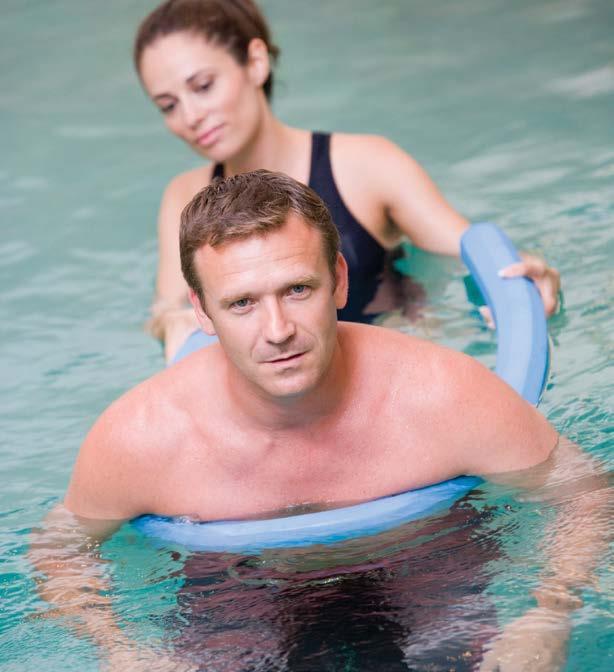
9
Increasing Energy Expenditure and Lowering All-cause Mortality Risk
Steven Professor, Arnold School of Public Health, University of South Carolina Blair, P.E.D.
Following a major surgery Wanda’s physical therapist suggested an aquatic program. ‘In only 8 weeks I no longer have limited range of motion and can move freely without pain. In addition my energy levels have skyrocketed. The warm water pool and a support system allowed me to live a high quality life.’” — Wanda Powers
Source: Roseville Health & Wellness Center. Success stories. 2015; http://www.rosevillehwc.com/successStories.php, July 23, 2015.
The World Health Organization (WHO) estimates that 5.3 million people worldwide die every year as a result of diseases associated with physical inactivity, and there is evidence that the increasing trend in physical inactivity plays a substantial role in the global obesity crisis.19 Energy expenditure and caloric intake may be the most widely debated factors influencing obesity; however, the debate can be countered by the need for energy balance, in which the two factors are matched, or, in the case of being overweight or obese, working to achieve a negative energy balance. A negative energy balance can be achieved by eating fewer calories or expending them through exercise, and studies have shown that aquatic exercise is a healthful alternative to more commonly prescribed forms of physical activity, like walking and running.19-21
One such study, called the Aerobics Center Longitudinal Study (ACLS), compared health habits and physiological characteristics among swimmers, runners, walkers, and sedentary women and men.20 The study found that the benefits of swimming appear to be similar to those of walking and running, and more beneficial than a sedentary lifestyle.20 As such, swimming is a potential healthy alternative to
traditional modes of exercise for both the general population and patients suffering from chronic disease.20 Another study used the ACLS data to evaluate the association between different types of physical activity and all-cause mortality.21 After adjusting for age, BMI, smoking status, alcohol intake, and family history of cardiovascular disease, swimmers had 53%, 50%, and 49% lower all-cause mortality risk compared to men who were sedentary, walkers, or runners, respectively.21 The inverse association did not change with additional adjustment for baseline prevalent diseases between different activities and allcause mortality.21
From these findings, we can conclude that aquatic exercise may be a healthful alternative to other types of physical activity for individuals at all stages of life.19,21 Aquatic exercise has the potential for use in increasing energy expenditure in overweight and obese individuals who cannot initially participate in running or other forms of physical activity. In this way, aquatic exercise can have a successful and lasting impact on the obesity crisis, and help society solve the biggest public health problem of the twenty-first century.
10 www.playcore.com/WaterImmersionWorks

11
Strengthening Low Back Muscles and Reducing Pain
Eadric
Bressel, Ph.D.
Professor of Biomechanics, Utah State University
An interview with Beth Heindel a water aerobics instructor at LaGrange College in LaGrange, GA revealed she has more participation from seniors than any other age group. Her classes offer three levels of intensity: low, medium, or high. Describing the benefits of water aerobics, she said, ‘Water aerobics saved my life after a spinal injury at 36. Most of my over-50 clients say they have more mobility, energy, and flexibility, allowing them to enjoy a higher quality of life.”
Source: Kaminsky J. Water aerobics helps everyone, especially seniors. 2013; http://www.examiner.com/article/water-aerobics-helps-everyone-especially-seniors, July 27, 2015.
It is well documented that water immersion to the chest reduces body weight by as much as 68%.22
This means that a person who weighs 170 pounds on land will weigh about 54 pounds in chest-deep water thanks to buoyant forces that counteract gravitational forces. This weight reduction is particularly relevant to any person who experiences joint pain. An astonishing 75-85% of the population will experience some form of low back pain during their lifetime.23 Many management plans for treating low back pain recommend some form of aquatic exercise therapy, as many people are simply unable to perform the necessary exercises on land because of the loadelicited pain from body weight.
The use of aquatic exercise therapy for treating back pain has many theoretical advantages over landbased exercise programs. For example, buoyancy reduces spinal loads24, and hydrostatic pressure and temperature of water assists with balance, pain control, and mobility.25 Accordingly, people with
back pain who find it difficult to perform land-based exercises may successfully perform aquatic-based exercises first and then progress to more functional land-based exercises.
Curiously, most muscles surrounding the low back are less active in water than on land.26 The lower activation levels in water are sufficient to improve motor control and endurance aspects of most low back muscles.27 In addition, these lower muscles activation levels are considered to be safer. For example, greater activation levels that are often observed on land (>40% of maximal), raises the likelihood of joint pain or injury to the spine.28 In this view, aquatic-based exercises produce a more appropriate activation level of the muscles surrounding the back, which is ideal for people with heightened back pain. In summary, the aquatic environment may be the most appropriate medium for people with back pain to begin strengthening the back muscles.
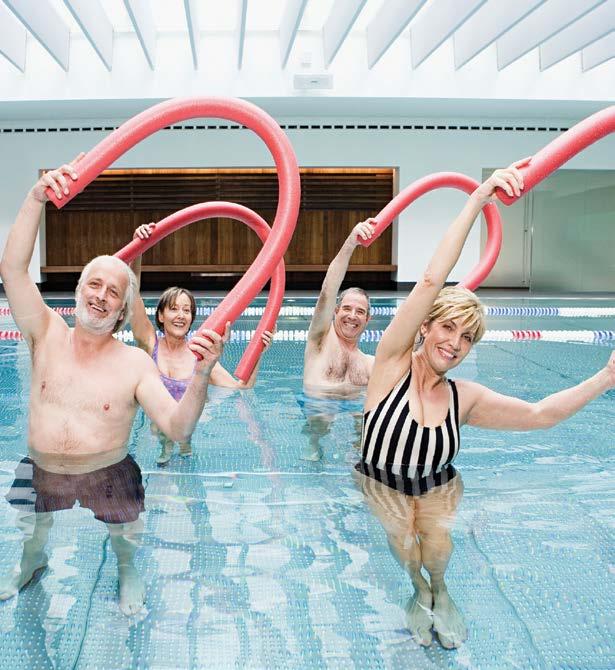
12 www.playcore.com/WaterImmersionWorks

13
Promoting Balance and Fall Prevention
Eadric
Professor of Biomechanics, Utah State University Bressel, Ph.D.
Alice and Jack had been married for several years and always enjoyed an active lifestyle. A car accident changed all that and left Alice with a traumatic brain injury. Alice and Jack decided to try water classes to help rebuild Alice’s muscles and promote balance. While it wasn’t easy at first, over time Alice increased her core control and learned to better maintain her footing. Alice hasn’t met all her goals yet, but she feels stronger everyday.”
Source: YMCA of Broome County. Success stories: Better Together - I am proof: 70 is NOT too old to learn to swim. 2015; http://ymcabroome.org/Success.html, July 27, 2015.
Falls are a major health concern among adults 65 years and older. For instance, falls among older adults are the leading cause of injury-related death and are a primary contributor to immobility and lack of independence.29 More concerning is that the incidence of falls among older adults is about one in three and proportionally increases to one in two after the age of 80 years. The increasing age of the worldwide populations suggest the need for appropriate fall prevention programs.
The evidence is clear that poor balance is a risk factor and that exercises which improve balance are an essential component of any fall prevention program.30 Commonly prescribed exercises for improving balance includes activities that minimize stability such as standing on one foot, standing on wobble boards, and performing various lower extremity exercises. However, a common psychological consequence of previous falls is fear of falling. As a result, many older
adults limit their balance activities on land to minimize risk of falling31, further decreasing functionality and exacerbating the issue of decreased balance. Recent research examining dynamic balance in chest-deep water supports the assertion that balance exercises performed in water are associated with less fear of falling32 than on land. Indeed, the same unique features of water that may have minimized fear of falling (e.g., buoyancy, hydrostatic pressure, and viscosity) may also cause balance exercises in water to be more unstable than on land. The added instability is actually beneficial, especially if fear of falling is minimized since balance is improved through exercises that are characteristically unstable. The instability and security created by chest-deep water immersion is the ideal training environment for older adults who need to improve balance, which ultimately leads to greater independence, physical function, and reduced risk for falls.
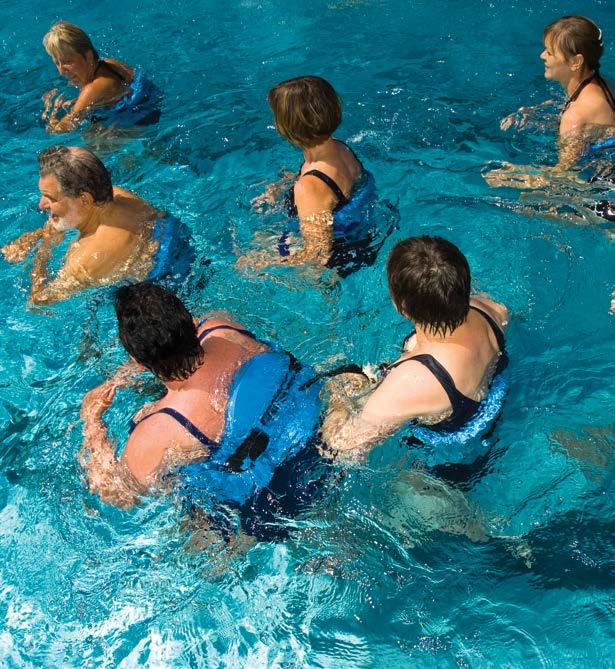
14 www.playcore.com/WaterImmersionWorks

15
Improving Cardiovascular Health
Paul D.
Assistant Professor, Division of Exercise Physiology, School of Medicine, West Virginia University Chantler, Ph.D.
I’ve been able to reduce my cholesterol [in water aerobics class]. I have many problems with my lower spine and the pain has been reduced greatly with water aerobics.” — Kate
Source: Aquatic Exercise Association. 50 aquatic exercise testimonials. 2015; https://www.aeawave.com/ArticlesMore/ BetterHealth/tabid/355/ctl/DetailView/mid/453/itemid/1512/spot/false/Default.aspx, July 27, 2015.
Today’s society is faced with a growing epidemic of people presenting with multiple cardiovascular disease risk factors, such as obesity, high blood pressure, high blood sugar, cholesterol, and triglycerides. This combination of risk factors is termed the metabolic syndrome, which is present in 56 million U.S. adults and is associated with a three-fold greater risk of cardiovascular mortality. Added to this state of metabolic dysfunction is a state of chronic physical inactivity. These risk factors, in part, cause physical and functional changes to the blood vessels that contribute to the increased cardiovascular disease risk. Indeed, in people with the metabolic syndrome the blood vessels become stiffer, and they become less effective in contracting and relaxing over time.
Importantly, researchers have shown that land-based exercise such as walking, running, or cycling over 8-12 weeks, three times per week, for an hour per time is effective in lowering blood pressure and improving the health of the blood, in particular lowering the stiffness of the blood vessels. Aquatic exercise is an attractive form of exercise for obese people, given the elevated risk of injuries in obese individuals from exercising on land. Aquatic exercise is known to be effective in improving physical fitness and have favorable effects on body composition. Thus, the Chantler Lab at West Virginia University, set out to
examine how effective deep-water running, a form of low-impact training, could improve blood vessel health in people with metabolic diseases.
The study recruited 12 individuals with the metabolic syndrome who participated in an eight-week deepwater exercise-training program for three days/ week, for one hour/day with the intensity of exercise gradually building up every two weeks. In all individuals blood vessel health and physical fitness was measured before and after the intervention.
Importantly, the study showed that deep water running was just as effective as land-based aerobic exercise in reducing the stiffness of the blood vessels in individuals with the metabolic syndrome. Although long-term aquatic based exercise training studies are needed to determine the effectiveness of lowering cardiovascular disease risk, the reduction in blood vessel stiffness after eight weeks is an important step in improving the health of people with metabolic diseases. As such, organizations such as the American Heart Association and the American College of Sports Medicine should highlight the use of aquatic-based exercise as a ‘medicine’ to improve cardiovascular health in individuals who are obese with metabolic diseases.
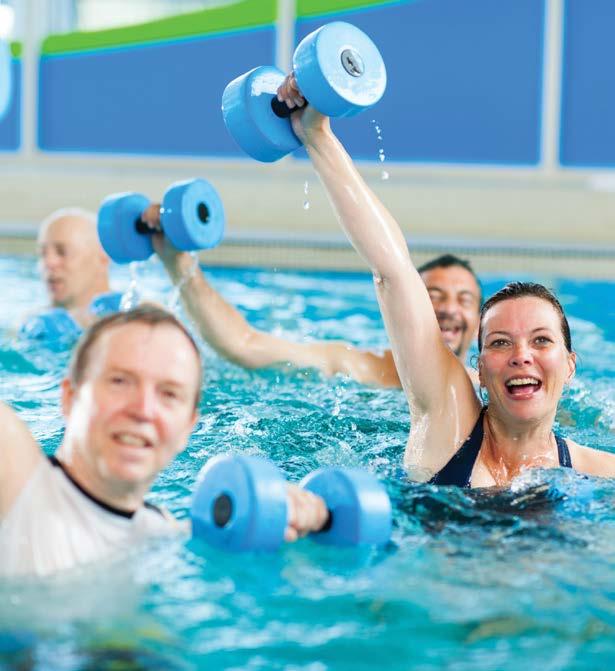
16 www.playcore.com/WaterImmersionWorks

17
Burning Calories through Water Exercise
Dennis
Dolny, Ph.D.
Department Head, Health, Physical Education, and Recreation Department, Utah State University
In many instances activities associated with a pool or other water environment are associated with fun or a leisurely activity. Rarely will activities in a pool be construed as strenuous or contributing significantly to energy expenditure or calories burned. Nothing could be further from the truth! For an average size person running a mile on land in 5 minutes (quite a feat) they would expend about 20 kilocalories (kcals) per minute. When swimmers specialized in long distance events swim at speeds during a 10 kilometer event they expend about 17 (female) to 24 (male) kcals per minute.33
When skilled male swimmers are measured for energy expenditure while performing their competitive strokes, maximal rates of energy expenditure reach 60 kcals per minute.34 When you consider a 4 minute run takes about 25 kcals per minute (kcal.min) it’s no wonder swimmers represent some of the fittest athletes on earth. Therefore, competitive swimming easily reaches and perhaps exceeds rates of kcals typically expended by a very small percentage of folks exercising on land. However, you don’t have to be a skilled swimmer to benefit from the pool’s impressive rates of energy expenditure. When individuals in a pool run in place they can experience a rate of energy expenditure of 3-6 kcals per minute based on stepping cadence.35 These values match the rate of energy expenditures of folks walking between 2-4 miles per hour on land. Also, when performing continuous and interval-style aerobic routines in water one can expect to expend 3.2 to 4.6 kcals per
minute.36 Examples of kcal expenditure comparisons of different exercise modalities are presented in Table 1 below.37
Table 1. Kilocalorie Expenditure
Despite the soothing effects of water immersion and the therapeutic impact it has on overall well-being, don’t be fooled by the relaxing environment. You can experience a level of calorie burning that will rival and perhaps exceed anything you could ever attain on land.
18 www.playcore.com/WaterImmersionWorks
Exercise Mode Kilocalorie Expenditure Aquatic Callisthenic Exercise 5.7 - 6.5 kcal.min Aerobic Dance 6.2 - 6.6 kcal.min Land Circuit Training 5.1 - 6.1 kcal.min Land Step Aerobics 6.7 - 7.7 kcal.min Land Running 11 min mile 8.0 kcal.min Land Running 9 min mile 11.4 kcal.min Land Walking normal pace 4.7 kcal.min Deep Water Walking 8.8 kcal.min Deep Water Running 11.5 kcal.min

19
Promoting Bone Health through Water-based Exercise
Dennis
Dolny, Ph.D.
Department Head, Health, Physical Education, and Recreation Department, Utah State University
It is well-established that lack of mechanical stimulation may lead to an irreversible decline in bone density, which is well exemplified in studies of underweight and immobility. Studies have demonstrated the effectiveness of various exercise programs (such as walking or strength training) in improving bone density or decreasing the rate of decline in bone density in the population observed.38
There are still contradictions in literature when it comes to water-based exercises for promoting bone health. Water sports athletes normally show lower bone mineral density compared to other modalities.38 These data have questioned the ability of aquatic exercise to improve or even maintain bone health.
On the other hand, despite a reduction in gravitational forces, water-based training programs have also been shown to be beneficial in the prevention and/ or treatment of osteoporosis.39-43 It is possible to develop osteogenic potential through specific muscle strength training in the aquatic environment. Ay and Yurtkuran39 reported an anabolic effect of pool-based exercises on the bone of postmenopausal women that was evidenced by increased hormonal markers (insulin-like growth factor-1, growth hormone and calcitonin).
Moreira40 evaluated 24-week effects of a high-intensity aquatic exercise program on bone remodeling markers and bone mass of postmenopausal women. They studied 108 women, randomized into an aquatic
exercise group, performing 24 weeks of aquatic exercises, and a sedentary control group. They had their fasting morning blood sample collected for the measures of intact parathyroid hormone (iPTH), procollagen type 1 amino-terminal propeptide (P1NP) and carboxy-terminal cross-linking telopeptide of type I collagen (CTx). Bone mass was measured by dualenergy X-ray absorptiometry (DEXA) before and after the intervention. Results showed an augment in bone formation marker (P1NP) only in the aquatic exercise group (15.8%), and although both groups experienced significant enhancements in bone resorption marker (CTx), this increase was less considerable in the aquatic exercise group (15% in the aquatic exercise group and 29% in the control group). IPTH was increased by 19% in the control group at the end. The femoral trochanter bone mineral density presented a 1.2% reduction in the control group, whereas in the aquatic exercise group no change was observed. The proposed aquatic exercise program was efficient in attenuating bone resorption and enhancing bone formation, which prevented the participants in the aquatic exercise group from reducing the femoral trochanter bone mineral density.
Finally, thirty-five postmenopausal women trained for seven months for three one-hour sessions per week and were compared with an aged-matched control, non-exercise group. Dual x-ray absorptiometry (DEXA) quantified bone mineral content, bone mineral density, and the accompanying z and t-scores. While
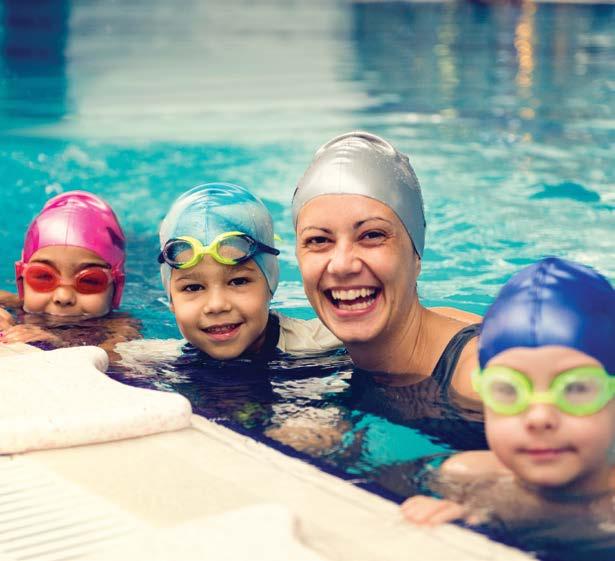
20 www.playcore.com/WaterImmersionWorks

the control group demonstrated a decline in all measures, the aquatic exercise group increased bone mineral content while maintaining bone mineral density.41 The findings44 that aquatic exercise maintains bone mineral density which prevents the expected yearly decline should also not be overlooked.
In summary, the results of these studies support the hypothesis that it is possible to plan and execute a water exercise program that has a positive effect on bone status of postmenopausal women and have the potential to facilitate bone health throughout one’s lifetime.
21
Provoking Cardiometabolic Response Benefits through High Intensity Interval Training
Elizabeth “Betsy”
Assistant Professor and Graduate Faculty, Department of Health and Physical Activity, University of Pittsburgh Nagle, Ph.D., FACSM
With more than 8.5 million participants nationwide, aquatic exercise is a widely popular adaptation of land-based physical activity (i.e. walking, jogging, calisthenics, and locomotor/resistive movements) to a water medium. Performed in shallow or deep water, aquatic exercise improves health-fitness outcomes, and athletic performance.45 Due to water’s friendly properties, aquatic exercise is appealing across the lifespan, offers a safer and lower weight-bearing alternative to land-based exercise45, and creates opportunities for those with mobility limitations, poor balance, or inability to achieve higher intensities during land-based exercise.46
A newer form of aquatic exercise, Aquatic High Intensity Interval Training (AHIIT), has evolved out of land-based programming and traditional aquatic exercise formats. AHIIT is characterized by short bursts of exercise using work:rest intervals performed47,48 at intensities approximately 85-95% of an individual’s maximal heart rate, followed by active recovery periods. Evidence supports AHIIT as an equally beneficial form of aquatic exercise compared to traditional continuous aquatic exercise routines previously studied.49,50 Several factors help to explain why AHIIT may be particularly effective and in some cases, offer advantages compared to traditional forms of aquatic exercise training.
First, AHIIT is considered versatile and may be adapted to participants of all ages and health status. This could include athletes who engage in AHIIT for cross-training or rehabilitative purposes, to chronic disease patients unable to participate in land-based forms, and who desire to reduce symptoms, improve quality of life, or physical outcomes.51,52 In addition, AHIIT is time efficient. AHIIT participants are capable of performing repeated bouts of aquatic exercise at intensities that could not be maintained during a traditional continuous training session.53 This newer approach promotes greater enjoyment and selfefficacy,54 and addresses time barriers associated with exercise.
For prevention of cardiovascular and other chronic disease risk factors, AHIIT can offer cardiometabolic protection. A University of Pittsburgh study examined a 40-minute shallow water AHIIT protocol that included 15-second very hard/easy intervals, measuring energy expenditure (EE) during 12 separate 3-5 minute cardiorespiratory and muscular endurance segments. Greater oxygen uptake (V02), heart rates (HR), and energy expenditure (Kcals) were observed compared to previous continuous aquatic exercise protocols.36,55-58 It was felt that AHIIT provoked greater cardiometabolic responses because: 1) shallow water elicits greater physiological responses due to increased ground reaction forces and decreased effects of hydrostatic pressure; 2) greater velocity of movement will increase intensity, and energy expenditure; 3) engagement in vigorous full range of motion movements increases drag force, frictional movement, and work output; and 4) including visual/ verbal cue systems encourages speeds needed for higher intensity workouts.
With a readiness and desire to begin, objectives and outcomes of an AHIIT program (i.e. fat loss, improved
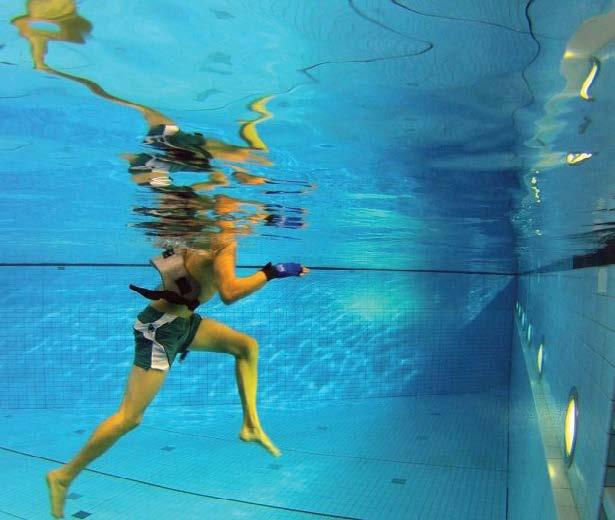
22 www.playcore.com/WaterImmersionWorks

fitness, etc.) may be targeted. A self-regulated intensity chosen using physiological (i.e. heart rate) or perceptual markers (i.e. ratings of perceived exertion) can gauge intensity and challenge hydrodynamic properties through variations in surface area, range of motion, and speed. This approach demonstrates increased program adherence, possibly due to permutations in functional movements and interval options available.59,60 For a conditioning stimulus, proper postural alignment, body mechanics, and full range of motion are required. Most important, participants should work independently, and always feel comfortable and safe in an aquatic environment.
While the concept of performing high intensity physical activity is not new, AHIIT is a more novel approach to the traditional aquatic exercise class. For researchers, practitioners, and instructors alike, AHIIT should be promoted as an advantageous, fun, energy-boosting aquatic challenge!
23
Increasing Physical Activity through Non-weight Bearing Modality
Jacquelyn Ann
Nagle, Ph.D
Assistant Professor, Department of Counseling and Exercise Science, John Carroll University
Obesity in the United States has reached epidemic levels with approximately 69% of adults classified as overweight or obese.61 In highlighting the role of physical activity for the treatment of obesity,62,63 aquatic exercise is quickly growing in popularity and considered an effective alternative to land-based exercise providing unique benefits for individuals with a body weight issue.56,64
Exercise prescription in the treatment of obesity is strongly influenced by the patient’s ability to exercise. Overweight and obese individuals are typically prescribed land-based activities performed at moderate intensities due to their practical nature and convenience.65 However, research suggests patients are not able to tolerate weight-bearing aerobic activities.66,67 Despite the proven benefits of aerobic exercise, these traditional modes are associated with musculoskeletal pain, osteoarthritis of the knee and hip,68-70 and increased risk of injury due to accumulated stress on the lower extremities and spine with excess body weight.66,71-76 Finally, the added metabolic cost associated with excess weight makes it more difficult to exercise for sufficient frequencies and durations, because it is perceived as too strenuous.77-79 Consequently, there is mounting evidence to support that obese individuals have a reduced exercise tolerance for land-based activity, with pain and injury from exercise often cited as reasons for discontinuing a physical activity program.79,80
To counter these issues which often limit activity in obese individuals,81 the American College of Sports Medicine recommends non-weight bearing modalities for physical activity programming in an obese population.82 Due to the increased buoyancy of water, obese individuals may find water to be a desirable environment for exercise. Water immersion results in up to a 90% reduction in body weight, potentially preventing injuries caused by excessive strain.75,83 Additionally, patients may experience less heat stress due to water’s thermoregulatory characteristics permitting a more efficient heat dissipation, resulting in aquatic exercise being perceived as less strenuous.37,84-86
Weight loss through increased physical activity is of great importance for overweight and obese. A few studies have indicated that aquatic exercise programs elicit equal reductions in body weight and body fat compared to land-based exercise programs,86,87 and is supported by recent research showing that obese women expend a similar number of calories walking in the water and land.88 Additionally, researchers have reported that even at higher intensities, individuals exercising in water will perceive the activity to be easier.89
In addition to expending calories, physical activity also protects against the loss of lean mass,66,90 improves cardiorespiratory fitness, reduces obesity-

24 www.playcore.com/WaterImmersionWorks

related cardiometabolic health risks, and promotes a sense of well-being. Aquatic exercise has shown numerous behavioral and psychological benefits in overweight and obese populations, with aquatic exercise groups having greater enjoyment and quality of life measures compared to individuals in land-based groups.87 In populations where there are a number of perceived barriers to exercise, increased enjoyment and quality of life outcomes may result in greater participation and adherence to an exercise program.
Physical activity is a crucial component of weight management in overweight and obese individuals. With its rapidly growing popularity, aquatic exercise provides a number of benefits and should be utilized as an alternative to landbased exercise for numerous populations including overweight and obese individuals.
25
Preventing and Lowering High Blood Pressure
Hirofumi
Tanaka, Ph.D.
Professor, Department of Kinesiology and Health Education, University of Texas at Austin
…physically before the class I had a hard time lowering my blood pressure. Even with medication my blood pressure was always 130 & 140 on the high side and 85 to 90 on the low side. Now I’m always around 115 over 75.” — Peter
Source: Aquatic Exercise Association. 50 aquatic exercise testimonials. 2015; https://www.aeawave.com/ArticlesMore/ BetterHealth/tabid/355/ctl/DetailView/mid/453/itemid/1512/spot/false/Default.aspx, July 27, 2015.
Blood pressure increases gradually and progressively with increasing age, resulting in a high prevalence of high blood pressure or hypertension among older adults. Hypertension affects more than 75 million American adults and 3 out of 4 Americans over the age of 65. Even though everyone seems to have this risk factor, a risk of hypertension should not be underestimated. Hypertension can lead to heart attack, stroke, and other cardiovascular diseases. Among middle-aged and older adults, the relative risk of developing heart disease due to hypertension can be greater than having high cholesterol or smoking.91 The first step in fighting against the development of high blood pressure is lifestyle modification, including regular exercise. It is well-known that land-based cardiovascular or aerobic exercise, including walking, jogging, and cycling, can reduce blood pressure in patients with hypertension. What about swimming exercise? Does it lower blood pressure as well?
The available research indicates that swimming exercise performed regularly in the pool is very effective in reducing blood pressure in patients
with hypertension.12,92 This can be accomplished with intensity (mild to moderate) and a frequency (three times a week) of swimming that most adults can perform. If adhered to, a clinically meaningful reduction in blood pressure can be produced in a fairly short time period (2-3 months) after the swimming program starts. The amount of blood pressure reduction with swimming exercise is similar to that of jogging and cycling exercises. Even a single workout in the swimming pool can reduce blood pressure. One way that regular swimming can lower blood pressure is that repeated workouts in the pool can reduce hardening or stiffening of the blood vessels, which is a primary factor that drives the increase in blood pressure with increasing age.
Swimming is particularly beneficial for older adults who suffer from hypertension. Because it is low impact and enjoyable, it can be continued for a lifetime even by obese adults. Thus, sufficient evidence is available at this time to recommend swimming exercise therapy for preventing and lowering high blood pressure.
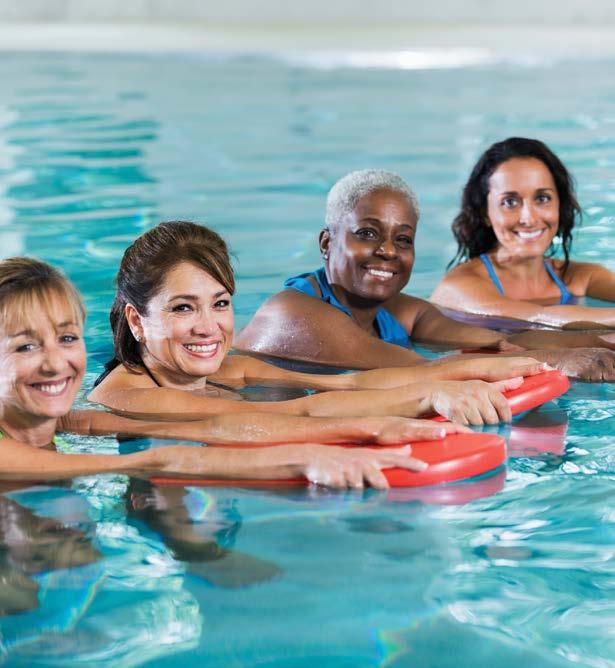
26 www.playcore.com/WaterImmersionWorks

27
Reducing Arthritis Joint Stress
Hirofumi
Tanaka, Ph.D.
Professor, Department of Kinesiology and Health Education, University of Texas at Austin
I have been obese for 30 years and suffered from Type II diabetes, high blood pressure, high cholesterol and painful arthritis.” Diane began working out in the warm water pool to reduce her pain and take advantage of the gentle environment to exercise. “I went from a size 28 to a size 8 and no longer require diabetic or cholesterol medication.”
Source: Roseville Health & Wellness Center. Success stories. 2015; http://www.rosevillehwc.com/successStories.php, July 23, 2015.
Arthritis is a chronic, localized joint disease and is a cause of pain, aching, stiffness, and swelling in the affected joints. An estimated 52 million Americans or about one in five Americans suffer from arthritis. Arthritis often limits the activities of daily living like walking or climbing stairs. It is the most common cause of disability in the United States. Because presently there is no cure for arthritis, main efforts are directed towards reducing symptoms and improving functions.
Adults with arthritis are much less likely to be physically active and more likely to remain sedentary. This is because of a perception that exercise causes pain and swelling and further damages joints. In contrast to this widely-held perception, research studies demonstrate that regular physical activity reduces pain, improves physical function, and enhances quality of life in patients with arthritis,93 but for some patients with arthritis, the perception can be actually true. These weight-bearing activities performed on land can be very difficult because many of the patients are overweight or obese, have to carry
extra weight of their own every time they exercise, and put more stress on their joints. In some parts of the United States, heat-related exhaustion or illness is another concern for these patients when they exercise high temperatures.
This is where swimming and aquatic exercise comes in. Due to the buoyancy of water, stress on the affected joints is much lower. The risk of heat illness is also reduced as exercise is performed while being surrounded by cool water. Many patients with arthritis have other coexisting clinical conditions such as cardiovascular disease and diabetes.
Swimming is an excellent form of exercise for improving vascular function. By engaging in waterbased exercise participants seem to enjoy swimming more than walking or cycling.13 This is important because may people drop out of exercise programs within several months after they start exercising. As such, these water-based exercises are ideal forms of exercise for patients with arthritis to perform on a regular basis.
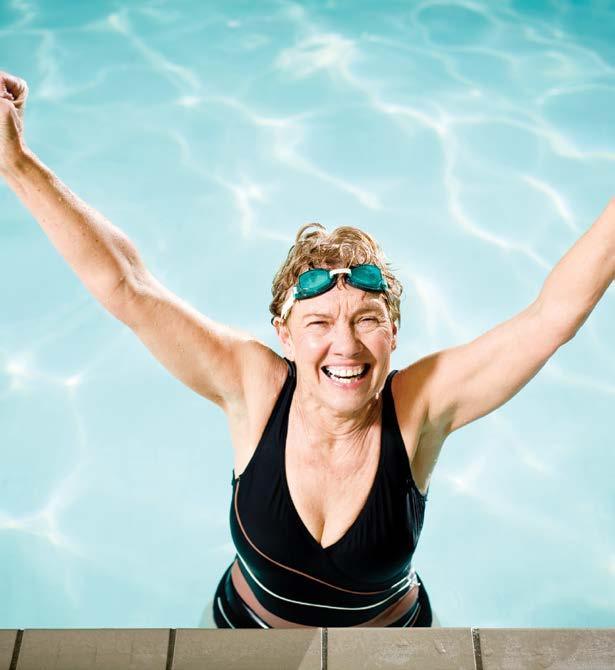
28 www.playcore.com/WaterImmersionWorks

29
call to action Making Water Immersion a Priority
The benefits of water are plentiful. In this resource, some of the most respected aquatic scholars highlighted the many research-based benefits of aquatic immersion and activity.
• Aquatic immersion and aquatic exercise increases the supply of oxygen to muscles promoting nervous system health.
• Blood flow to the brain and arterial health may be enhanced by water immersion.
• Warm water immersion has biological benefits for individuals with post-traumatic stress disorder (PTSD) by positively impacting the sympathetic nervous system.
• The benefits of swimming are similar to those of walking and running, and present an alternative method to traditional modes of exercise, increase energy expenditure, and lower all-cause mortality risk.
• The use of aquatic exercise therapy has been shown to have advantages over land-based exercise programs on strengthening low back muscles and reducing pain.
• Dynamic balance in chest-deep water supports the assertion that balance exercises performed in water are associated with less fear of falling than on land, and therefore, promote balance and fall prevention.
• Aquatic exercise is known to be effective in improving physical fitness and having favorable effects on body composition while improving cardiovascular health.
• Water exercise offers impressive rates of energy expenditure and caloric burn.
• Aquatic exercise has an effect on attenuating bone resorption and enhancing bone formation.
• Due to water’s friendly properties, aquatic high intensity interval training offers a lower weight-bearing alternative to land-based exercise, and creates opportunities for individuals with mobility limitations, poor balance, or inability to achieve higher intensities during land-based exercise.
• Water-based non-weight bearing modalities for physical activity programming has been recommended in obese populations who find water a desirable environment for increased physical activity.
• Swimming exercise performed regularly in the pool is effective in reducing blood pressure in patients with hypertension.
• Due to the buoyancy of water, arthritis joint stress is reduced considerably while improving vascular functioning.
We know that water immersion is critical for the overall health of every individual, for uniting families, and building communities. It is also extremely beneficial for physical activity, and provides an alternative medium of exercise to those that are unable to participate in land-based activities. While the evidence is overwhelmingly clear, the research continues to evolve and further document the plentiful benefits of water immersion.
Join us in our vision and mission of moving the aquatic industry forward. Together we must make it a national priority to continue researching and effectively implementing the research-based benefits of water immersion. We must align advocates and resources to creatively support and fund water immersion initiatives and infrastructure, and it is most critical that each one of us deeply understands the many benefits of water – it is critical in promoting our nation’s health.


30 www.playcore.com/WaterImmersionWorks
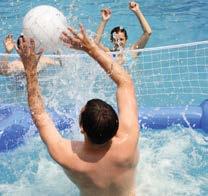




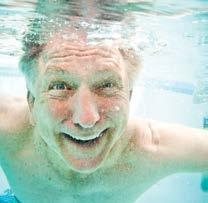


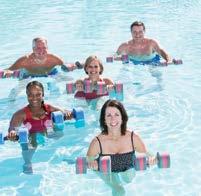


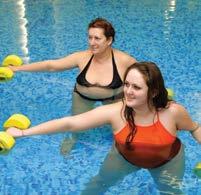
scholar contributors

Bruce Becker, M.D.
Director, National Aquatics & Sports Medicine Institute
A graduate of Tulane University School of Medicine, Dr. Becker completed his residency training in Physical Medicine and Rehabilitation at the University of Washington. He served as VP of Medical Affairs for the Rehabilitation Institute of Michigan from 1992 until 1998 when he moved to Spokane to serve as Medical Director of St. Luke’s Rehabilitation Institute until 2006. Since then he has served as Director of the National Aquatics and Sports Medicine Institute at Washington State University, pursuing physiologic research during aquatic activity. He holds clinical appointments as Clinical Professor in the Department of Rehabilitation Medicine at the University of Washington – School of Medicine and Adjunct Research Professor at Washington State University. He has been interested in fitness, conditioning, and the effects of exercise on physiology, aging, and disability throughout his career. He has a major interest in aquatic rehabilitation, and is President of the American Society of Medical Hydrology. In 1999, the Aquatic Therapy and Rehabilitation Institute named Dr. Becker as Aquatic Professional of the Year. Aquatics International Magazine named him to the Power 25 in Aquatics in 2006 and again in 2011. He was the recipient of the John K. Williams Award from the International Swimming Hall of Fame in May 2011 for his work in adapted aquatics. He is the recipient of major aquatic research grants from the National Swimming Pool Foundation, and is currently Director of Health Benefit Research for that foundation.



Steven Blair, P.E.D.
Professor, Arnold School of Public Health, University of South Carolina
Steven N. Blair is Professor in the Departments of Exercise Science and Epidemiology and Biostatistics at the Arnold School of Public Health, University of South Carolina. Dr. Blair is a Fellow in the American College of Epidemiology, Society for Behavioral Medicine, American College of Sports Medicine, American Heart Association, and American Kinesiology Academy; and was elected to membership in the American Epidemiological Society.
Eadric Bressel, Ph.D.
Professor of Biomechanics, Utah State University
Dr. Eadric Bressel is a professor and clinical research scientist in the Sports Medicine Program at Utah State University (USU) in Logan, UT. He received his B.S. in 1994 and M.S. in 1995 in exercise science from California State University, Fresno, and he received his Ph.D. in biomechanics from the University of Northern Colorado in 1999. His aquatic research examines neuromechanical adaptations to therapeutic exercise. With his academic appointment in the Department of HPER at USU Eadric is a member of the American College of Sports Medicine.
Paul Chantler, Ph.D.
Assistant Professor, Division of Exercise Physiology, School of Medicine, West Virginia University
Paul Chantler received his Ph.D. in cardiovascular physiology from Liverpool John Moores University, United Kingdom, and his post-doctoral training from the National Institutes of Health, National Institutes on Aging. Dr. Chantler is examining the effects of various therapeutic interventions, which includes exercise training, nutritional supplementation, and pharmacological therapies, on improving heart and blood vessel health in people with metabolic syndrome, and diabetes at West Virginia University.

Dennis Dolny, Ph.D., Department Head
Health, Physical Education and Recreation Department, Utah State University
Dennis Dolny received his BA and MS in Physical Education from Wake Forest University and Ph.D. from Kent State University in Physical Education with an emphasis in Exercise Physiology. For 24 years he was on faculty at the University of Idaho. In 2008 he accepted the Department Head position in Health, Physical Education & Recreation in the Emma Eccles Jones College of Education & Human Services at Utah State University. His recent research projects have included studying the acute effects of vibration exposure on subsequent muscle power output, developing techniques to monitor skeletal muscle activity during walking and running in water, and currently funded projects involve the use of aquatic exercise exposure on energy expenditure, joint discomfort and perceived effort in overweight subjects and those with osteoarthritis. At USU he collaborates with USU Sports Medicine examining the role of hydrotherapy in rehabilitation and conditioning in the elderly.

Elizabeth “Betsy” Nagle, Ph.D., FACSM
Assistant Professor and Graduate Faculty, Department of Health and Physical Activity, University of Pittsburgh
Elizabeth Nagle, Ph.D., FACSM is an Assistant Professor and Program Coordinator in the Department of Health and Physical Activity at the University of Pittsburgh where she teaches graduate and undergraduate courses in exercise physiology, research methods, and physiology of training. Her research includes prediction in performance in swimmers, aquatic weight loss interventions (funded by NIDDK), and development of test protocols that assess cardiorespiratory fitness (funded by National Swimming Pool Foundation). Most recently (2014) she served as a co-investigator for the Naval Special Warfare Injury Prevention and Human Performance Research Initiative (funded through Department of Defense) examining prediction of aquatic performance. She is a member of the American College of Sports Medicine, Red Cross, USA Swimming, and National Swimming Pool Foundation.

Jacquelyn Ann Nagle, Ph.D.
Assistant Professor, Department of Counseling and Exercise Science, John Carroll University
Jacquelyn Nagle, PhD is an Assistant Professor at John Carroll University. Her research interests include the physiological responses to aquatic exercise and the subsequent impact on health. Her current work includes the development of multiple fitness tests designed specifically for aquatics to improve performance and reduce the risk of long-term injury during aquatics based exercise. She was a past recipient of the National Swimming Pool Foundation Fellowship Award during her doctoral work. She completed her dissertation on “Comparing Energy Expenditure during Land and Shallow Water Walking in Overweight and Obese Females,” while at the University of Pittsburgh. She completed her postdoctoral training at the University of Pittsburgh Neuromuscular Research Laboratory, where she developed aquatics-based protocols for the assessment of swimming performance in military populations. Future work hopes to continue to investigate the effective and safe of aquatic-based exercise in special populations.

Hirofumi Tanaka, Ph.D.
Professor, Department of Kinesiology and Health Education, University of Texas at Austin
Dr. Hirofumi Tanaka is a Professor and the Director of the Cardiovascular Aging Research Laboratory at the University of Texas at Austin. He received a B.A. in physical education from the International Budo (Martial Arts) University in Japan, a M.S. in human bioenergetics from Ball State University, and a Ph.D. in applied physiology from the University of Tennessee at Knoxville. He then completed his postdoctoral fellowship in cardiovascular physiology at the University of Colorado at Boulder. Dr. Tanaka’s research interest includes the influence of regular swimming exercise on vascular function and disease risks. He has published extensively in the area of swimming and its health benefits. He regularly swims in his neighborhood pool and at the University pools.
33
references
1. Bolduc V, Thorin-Trescases N, Thorin E. Endothelium-dependent control of cerebrovascular functions through age: Exercise for healthy cerebrovascular aging. American Journal of Physiology Heart and Circulatory Physiology. 2013;305(5):H620-633.
2. Carter HH, Spence AL, Pugh CJ, Ainslie P, Naylor LH, Green DJ. Cardiovascular responses to water immersion in humans: impact on cerebral perfusion. American Journal of Physiology Regulatory, Integrative and Comparative Physiology. 2014;306(9):R636-640.
3. Pugh CJ, Sprung VS, Ono K, et al. The effect of water immersion during exercise on cerebral blood flow. Medicine & Science in Sports & Exercise. 2015;47(2):299-306.
4. Brown AD, McMorris CA, Longman RS, et al. Effects of cardiorespiratory fitness and cerebral blood flow on cognitive outcomes in older women. Neurobiology of aging. 2010;31(12):2047-2057.
5. Tarumi T, Gonzales MM, Fallow B, et al. Central artery stiffness, neuropsychological function, and cerebral perfusion in sedentary and endurance-trained middle-aged adults. Journal of Hypertension. 2013;31(12):2400-2409.
6. Henwood T, Neville C, Baguley C, Clifton K, Beattie E. Physical and functional implications of aquatic exercise for nursing home residents with dementia. Geriatric Nursing. 2015;36(1):35-39.
7. Neville C, Clifton K, Henwood T, Beattie E, McKenzie MA. Watermemories: A swimming club for adults with dementia. Journal of Gerontological Nursing. 2013;39(2):21-25.
8. Neville C, Henwood T, Beattie E, Fielding E. Exploring the effect of aquatic exercise on behaviour and psychological well-being in people with moderate to severe dementia: A pilot study of the Watermemories Swimming Club. Australasian journal on ageing. 2014;33(2):124-127.
9. Myers KW, Capek D, Shill H, Sabbagh M. Aquatic therapy and Alzheimer’s disease. Annals of Long Term Care and Aging. 2013;21(5):36-41.
10. Arborelius M, Jr., Balldin UI, Lilja B, Lundgren CE. Hemodynamic changes in man during immersion with the head above water. Aerospace Medicine and Human Performance. 1972;43(6):592-598.
11. Becker BE. Aquatic therapy: Scientific foundations and clinical rehabilitation applications. PM&R. 2009;1(9):859-872.
12. Nualnim N, Parkhurst K, Dhindsa M, Tarumi T, Vavrek J, Tanaka H. Effects of swimming training on blood pressure and vascular function in adults >50 years of age. The American Journal of Cardiology. 2012;109:1005-1010.
13. Tanaka H. Swimming exercise: Impact of aquatic exercise on cardiovascular health. Sports Medicine. 2009;39:1-11.
14. Nualnim N, Barnes JN, Tarumi T, Renzi CP, Tanaka H. Comparison of central artery elasticity in swimmers, runners, and the sedentary. The American Journal of Cardiology. 2011;107(5):783-787.
15. Seals DR, Desouza CA, Donato AJ, Tanaka H. Habitual exercise and arterial aging. Journal of applied physiology. 2008;105(4):1323-1332.
16. Radak Z, Toldy A, Szabo Z, et al. The effects of training and detraining on memory, neurotrophins and oxidative stress markers in rat brain. Neurochemistry international. 2006;49(4):387-392.
17. Vaynman S, Gomez-Pinilla F. License to run: Exercise impacts functional plasticity in the intact and injured central nervous system by using neurotrophins. Neurorehabil Neural Repair. 2005;19(4):283-295.
18. Becker BE, Hildenbrand K, Whitcomb RK, Sanders JP. Biophysiologic effects of warm water immersion. International Journal of Aquatic Research & Education. 2009;3(1):24-37.
19. Shook RP, Blair SN, Duperly J, Hand GA, Matsudo SM, Slavin JL. What is causing the worldwide rise in body weight. US Endocrinology. 2014;10:44-52.
20. Chase NL, Sui X, Blair SN. Comparison of the health aspects of swimming with other types of physical activity and sedentary lifestyle habits. International Journal of Aquatic Research and Education. 2008;2(2):151-161.
21. Chase NL, Sui X, Blair SN. Swimming and all-cause mortality risk compared with running, walking, and sedentary habits in men. International Journal of Aquatic Research and Education. 2008;2(3):213-223.
22. Louder T, Bressel E, Baldwin M, Dolny DG, Gordin R, Miller A. Effect of aquatic immersion on static balance. International Journal of Aquatic Research and Education. 2014;8:53-65.
23. Hoy D, Brooks P, Blyth F, Buchbinder R. The epidemiology of low back pain. Best Practice & Research Clinical Rheumatology. 2010;24:769-
781.
24. Dowzer CN, Reilly T, Cable NT. Effects of deep and shallow water running on spinal shrinkage. British Journal of Sports Medicine. 1998;32:44-48.
25. Gusi N, Tomas-Carus P, Hakkinen A, Hakkinen K, Ortega-Alonso A. Exercise in waist-high warm water decreases pain and improves healthrelated quality of life and strength in the lower extremities in women with fibromyalgia. Arthritis and Rheumatism. 2006;55:66-73.
26. Bressel E, Dolny D, Gibbons M. Trunk muscle activity during exercises performed on land and in water. Medicine & Science in Sports & Exercise. 2011;43:1927-1932.
27. Vezina MJ, Hubley-Kozey CL. Muscle activation in therapeutic exercises to improve trunk stability. Archives of Physical Medicine and Rehabilitation. 2000;8:1370-1379.
28. Arokoski JP, Valta T, Kankaanpaa M, Airaksinen O. Activation of paraspinal and abdominal muscles during manually assisted and nonassisted therapeutic exercise. American Journal of Physical Medicine & Rehabilitation. 2002;81:326-335.
29. Evitt CP, Quigley PA. Fear of falling in older adults: a guide to its prevalence, risk factors, and consequences. Rehabilitation Nursing. 2004;29:207-210.
30. Chang JT, Morton SC, Rubenstein LZ, et al. Interventions for the prevention of falls in older adults: systematic review and meta-analysis of randomised clinical trials. British Medical Journal. 2004;328:680-683.
31. Yardley L, Smith HA. Prospective study of the relationship between feared consequences of falling and avoidance of activity in communityliving older people. Gerontologist. 2002;42(17-23).
32. Nagle EF, Sanders ME, Shafer A, et al. Energy expenditure, cardiorespiratory, and perceptual responses to shallow-water aquatic exercise in young adult women. The Physician and Sportsmedicine. 2013;41(3):67-76.
33. Zamparo P, Bonifazi M, Faina M, et al. Energy cost of swimming of elite long-distance swimmers. European journal of applied physiology. 2005;94(5-6):697-704.
34. Capelli C, Pendergast DR, Termin B. Energetics of swimming at maximal speeds in humans. European Journal of Applied Physiology and Occupational Physiology. 1998;78(5):385-393.
35. Alberton CL, Cadore EL, Pinto SS, Tartaruga MP, Da Silva EM, Kruel LFM. Cardiorespiratory, neuromuscular and kinematic responses to stationary running performed in water and on dry land. European journal of applied physiology. 2011;111(6):1157-1166.
36. Kruel LFM, Posser MS, Alberton CL, Pinto SS, Oliveira A. Comparison of energy expenditure between continuous and interval water aerobic routines. International Journal of Aquatic Research and Education. 2009;3:186-196.
37. Kravitz L, Mayo J. The physiological effects of aquatic exercise. International Journal of Medical Sciences. 2006;332:305-311.
38. Andreoli A, Monteleone M, Van Loan M, Promenzio L, Tarantino U, De Lorenzo A. Effects of different sports on bone density and muscle mass in highly trained athletes. Medicine and science in sports and exercise. 2001;33(4):507-511.
39. Ay A, Yurtkuran M. Evaluation of hormonal response and ultrasonic changes in the heel bone by aquatic exercise in sedentary postmenopausal women. American Journal of Physical Medicine & Rehabilitation. 2003;82(12):942-949.
40. Moreira LDF, Fronza FCA, dos Santos RN, et al. The benefits of a highintensity aquatic exercise program (HydrOS) for bone metabolism and bone mass of postmenopausal women. Journal of Bone and Mineral Metabolism. 2014;32(4):411-419.
41. Rotstein A, Harush M, Vaisman N. The effect of a water exercise program on bone density of postmenopausal women. Journal of Sports Medicine and Physical Fitness. 2008;48(3):352.
42. Malliopoulos X, Kozlowski O, Herbeau C, Brody L, Geigle P. Aquatic exercises and osteoporosis. Aquatic exercise for rehabilitation and training. Champaign, IL: Human Kinetics; 2000.
43. Tsukahara N, Toda A, Goto J, Ezawa I. Cross-sectional and longitudinal studies on the effect of water exercise in controlling bone loss in Japanese postmenopausal women. Journal of Nutritional Science and Vitaminology. 1994;40(1):37-47.
44. Pernambuco CS, Borba-Pinheiro CJ, de Souza Vale RG, Di Masi F, Monteiro PKP, Dantas EH. Functional autonomy, bone mineral density (BMD) and serum osteocalcin levels in older female participants of
an aquatic exercise program (AAG). Archives of Gerontology and Geriatrics. 2013;56(3):466-471.
45. Nagle EF, Sanders ME, Shafer A, et al. Energy expenditure, cardiorespiratory, and perceptual responses to shallow-water aquatic exercise in young adult women. The Physician and Sportsmedicine. 2013;41(3):67-76.
46. Sanders ME, Maloney-Hills C. Aquatic exercise for better living on land. ACSM’s Health & Fitness Journal. 1998;2(3):16-23.
47. Kessler HS, Sisson SB, Short KR. The potential for high-intensity interval training to reduce cardiometabolic disease risk. Sports Medicine. 2012;42(6):489-509.
48. Keteyian S. High intensity interval training in patients with cardiovascular disease: a brief review of physiologic adaptations and suggestions for future research. Journal of Clinical Exercise Physiology. 2013;2:13-19.
49. Mohr M, Nordsborg NB, Lindenskov A, et al. High-intensity intermittent swimming improves cardiovascular health status for women with mild hypertension. BioMed Research International. 2014;2014.
50. Wilber RL, Moffatt RJ, Scott BE, Lee DT, Cucuzzo NA. Influence of water run training on the maintenance of aerobic performance. Medicine & Science in Sports & Exercise. 1996;28(8):1056-1062.
51. Miller MG, Cheatham CC, Porter AR, Ricard MD, Hennigar D, Berry DC. Chest-and waist-deep aquatic plyometric training and average force, power, and vertical-jump performance. International Journal of Aquatic Research and Education. 2007;1(2):145-155.
52. Sanders ME, Escobar Torres L. Aquatic exercise for muscular dystrophy: The story of Laura Sos, Castellon, Spain. ACSM’s Health & Fitness Journal. 2010;14(6):35-41.
53. Klonizakis M, Moss J, Gilbert S, Broom D, Foster J, Tew GA. Low-volume high-intensity interval training rapidly improves cardiopulmonary function in postmenopausal women. Menopause. 2014;21(10):1099-1105.
54. Jung ME, Bourne JE, Little JP. Where does HIT fit? An examination of the affective response to high-intensity intervals in comparison to continuous moderate-and continuous vigorous-intensity exercise in the exercise intensity-affect continuum. PLoS ONE. 2014;9(12):e114541.
55. Campbell JA, D’Acquisto LJ, D’Acquisto DM, Cline MG. Metabolic and cardiovascular response to shallow water exercise in young and older women. Medicine & Science in Sports & Exercise. 2003;35(4):675-681.
56. D’Acquisto LJ, D’Acquisto DM, Renne D. Metabolic and cardiovascular responses in older women during shallow-water exercise. Journal of Strength and Conditioning Research. 2001;15(1):12-19.
57. Cassady SL, Nielsen DH. Cardiorespiratory responses of healthy subjects to calisthenics performed on land versus in water. Physical Therapy. 1992;72(7):532-538.
58. Phillips VK, Legge M, Jones LM. Maximal physiological responses between aquatic and land exercise in overweight women. Medicine and Science in Sports Exercise. 2008;40(5):959-964.
59. Sanders ME. Higher intensity interval training. Journal on Active Aging. 2013;12(1):66-73.
60. Escobar Torres L, Sanders ME, Lawson D, Belenguer Benitez C. A case study: Mobility and health impact of an aquatic fitness program for a woman with intellectual and physical disabilities. International Journal of Aquatic Research and Education. 2013;7(2):147-156.
61. Flegal KM, Carroll MD, Kit BK, Ogden CL. Prevalence of obesity and trends in the distribution of body mass index among US adults, 19992010. JAMA. 2012(5):491-497.
62. Foreyt JP, Goodrick K. Do’s and don’t’s for weight management: exercise is always good, but are some foods bad? Obesisty Research. 1994;2(4):378-379.
63. Pronk NP, Wing RR. Physical activity and long-term maintenance of weight loss. Obesity research. 1994;2(6):587-599.
64. Evans BW, Cureton KJ, Purvis JW. Metabolic and circulatory responses to walking and jogging in water. Research Quarterly. American Alliance for Health, Physical Education and Recreation. 1978;49(4):442-449.
65. Brill J, Perry A, Parker L, Robinson A, Burnett K. Dose-response effect of walking exercise on weight loss. How much is enough? International Journal of Obesity. 2002;26(11):1484-1493.
66. Bouchard C, Depres JP, Tremblay A. Exercise and obesity. Obesity research. 1993;1(2):133-147.
67. Lafortuna CL, Agosti F, Galli R, Busti C, Lazzer S, Sartorio A. The energetic and cardiovascular response to treadmill walking and cycle ergometer exercise in obese women. European journal of applied physiology. 2008;103(6):707-717.
68. Felson DT, Lawrence RC, Dieppe PA, et al. Osteoarthritis: New insights. Part 1: The disease and its risk factors. Annals of internal medicine. 2000;133(8):635-646.
69. Hellsing A-L, Bryngelsson L. Predictors of musculoskeletal pain in men: A twenty-year follow-up from examination at enlistment. Spine. 2000;25(23):3080-3086.
70. World Health Organization. Obesity: Preventing and managing the global epidemic. Vol 8942000.
71. Blair SN, Kohl HW, Goodyear NN. Rates and risks for running and exercise injuries: studies in three populations. Research Quarterly for Exercise and Sport. 1987;58(3):221-228.
72. Griffin TM, Guilak F. The role of mechanical loading in the onset and progression of osteoarthritis. Exercise and sport sciences reviews. 2005;33(4):195-200.
73. Jadelis K, Miller ME, Ettinger WH, Messier SP. Strength, balance, and the modifying effects of obesity and knee pain: results from the Observational Arthritis Study in Seniors (OASIS). Journal of the American Geriatrics Society. 2001;49(7):884-891.
74. Janney CA, Jakicic JM. The influence of exercise and BMI on injuries and illnesses in overweight and obese individuals: a randomized control trial. The international journal of behavioral nutrition and physical activity. 2010;7:1.
75. Wang TJ, Belza B, Thompson FE, Whitney JD, Bennett K. Effects of aquatic exercise on flexibility, strength and aerobic fitness in adults with osteoarthritis of the hip or knee. Journal of Advanced Nursing. 2007;57(2):141-152.
76. Wearing SC, Hennig EM, Byrne NM, Steele JR, Hills AP. Musculoskeletal disorders associated with obesity: A biomechanical perspective. Obesity Reviews. 2006;7(3):239-250.
77. Browning RC, Baker EA, Herron JA, Kram R. Effects of obesity and sex on the energetic cost and preferred speed of walking. Journal of applied physiology. 2006;100(2):390-398.
78. Browning RC, Kram R. Energetic cost and preferred speed of walking in obese vs. normal weight women. Obesity research. 2005;13(5):891-899.
79. Mattsson E, Larsson UE, Rossner S. Is walking for exercise too exhausting for obese women? Journal of the International Association for the Study of Obesity. 1997;21(5):380-386.
80. Bélisle M, Roskies E, Lévesque J-M. Improving adherence to physical activity. Health Psychology. 1987;6(2):159.
81. Zachwieja JJ. Exercise as treatment for obesity. Endocrinology and Metabolism Clinics of North America. 1996;25(4):965-988.
82. Medicine ACoS, Pescatello LS. ACSM’s Guidelines for exercise testing and prescription. Wolters Kluwer/Lippincott Williams & Wilkins Health; 2014.
83. Dowzer CN, Reilly T, Cable NT. Effects of deep and shallow water running on spinal shrinkage. British journal of sports medicine. 1998;32(1):44-48.
84. Sheldahl LM. Special ergometric techniques and weight reduction. Medicine and science in sports and exercise. 1986;18(1):25-30.
85. Di Prampero P. The energy cost of human locomotion on land and in water. International Journal of Sports Medicine. 1986;7(2):55-72.
86. Gappmaier E, Lake W, Nelson AG, Fisher AG. Aerobic exercise in water versus walking on land: Effects on indices of fat reduction and weight loss of obese women. Journal of Sports Medicine and Physical Fitness. 2006;46(4):564-569.
87. Nagle EF, Robertson RJ, Jakicic JJ, Otto AD, Ranalli JR, Chiapetta LB. Effects of aquatic exercise and walking in sedentary obese women undergoing a behavioral weight-loss intervention. International Journal of Aquatic Research and Education. 2007;1(1):43-56.
88. Nagle JN. Comparing energy expenditure during land and shallow water walking in overweight and obese females [Dissertation]: Health and Physical Activity, The University of Pittsburgh; 2014.
89. Fujishima K, Shimizu T. Body temperature, oxygen uptake and heart rate during walking in water and on land at an exercise intensity based on RPE in elderly men. Journal of Physiological Anthropology and Applied Human Science. 2003;22(2):83-88.
90. King AC, Tribble DL. The role of exercise in weight regulation in nonathletes. Sports Medicine. 1991;11(5):331-349.
91. Sharrett A, Sorlie P, Chambless LE, et al. Relative importance of various risk factors for asymptomatic carotid atherosclerosis versus coronary heart disease incidence: the Atherosclerosis Risk in Communities Study. American Journal of Epidemiology. 1999;149(9):843-852.
92. Tanaka H, Bassett DRJ, Howley ET, Thompson DL, Ashraf M, Rawson FL. Swimming training lowers the resting blood pressure in individuals with hypertension. Journal of Hypertension. 1997;83:160-165.
93. Batterham SI, Heywood S, Keating1 JL. Systematic review and metaanalysis comparing land and aquatic exercise for people with hip or knee arthritis on function, mobility and other health outcomes. BMC Musculoskeletal Disorders. 20011;12:123.
35
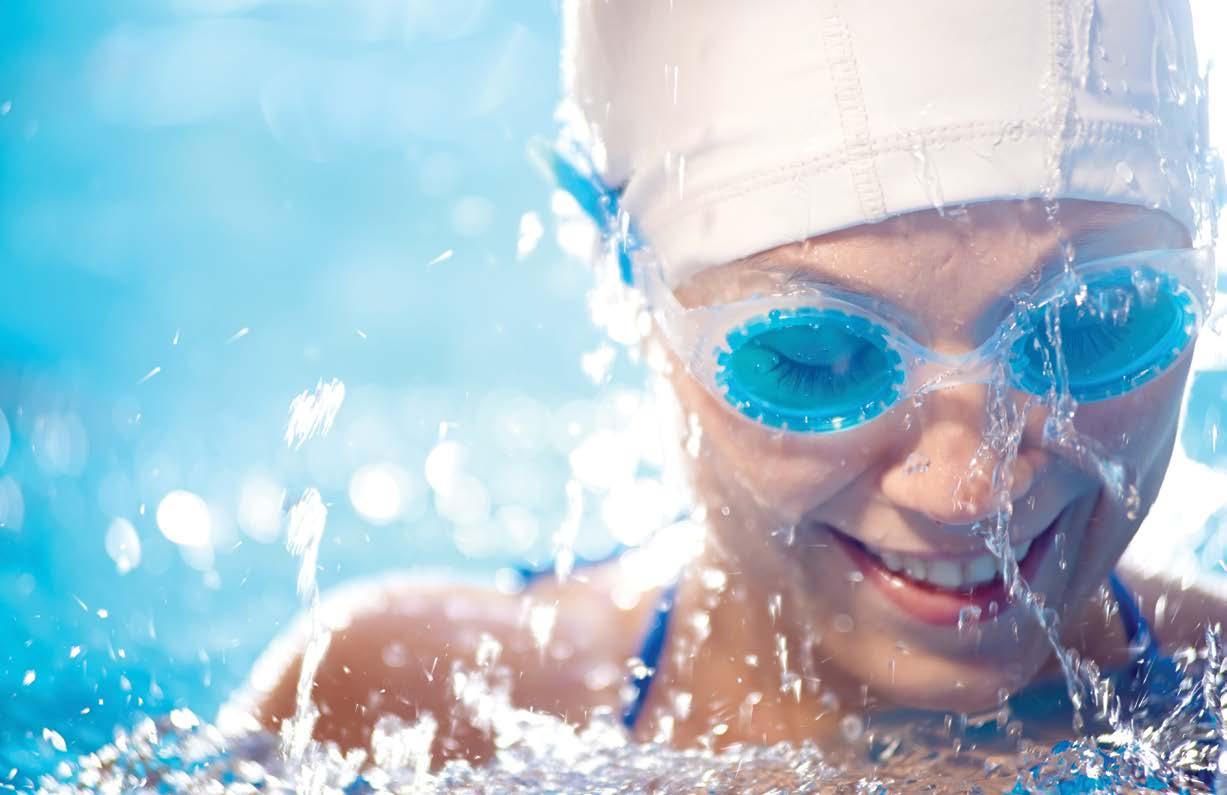
As water is a unique location that fosters health, Water Immersion Works™ is a unique publication that furthers our knowledge and opens the gates to healthier lives.”
- Thomas M. Lachocki, Ph.D. CEO, National Swimming Pool Foundation

Join us in our mission to promote the many researchbased health benefits of water. Together we must advocate for our nation’s health. Learn more, access aquatic research, and share your stories at www.playcore.com/WaterImmersionWorks
